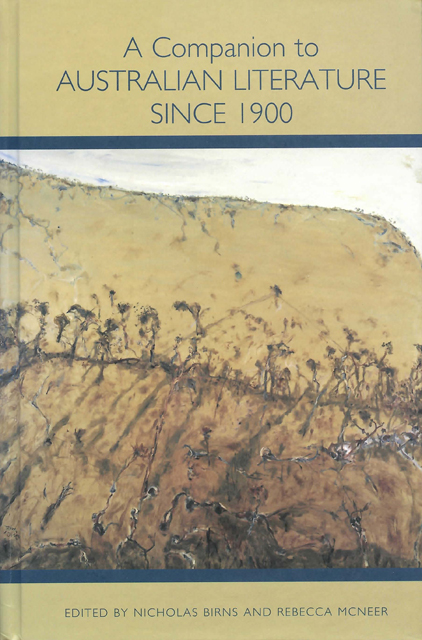Book contents
- Frontmatter
- Dedication
- Contents
- Chronology of Main Events in Australian History, 1901–2005
- Acknowledgments
- Note on the Cover Illustration and Artist
- Introduction
- Part 1 Identities
- Part 2 Writing Across Time
- Part 3 International Reputations
- Part 4 Writers and Regions
- Part 5 Beyond the Canon
- Notes on the Contributors
- Index
27 - Australian Film
Published online by Cambridge University Press: 10 March 2023
- Frontmatter
- Dedication
- Contents
- Chronology of Main Events in Australian History, 1901–2005
- Acknowledgments
- Note on the Cover Illustration and Artist
- Introduction
- Part 1 Identities
- Part 2 Writing Across Time
- Part 3 International Reputations
- Part 4 Writers and Regions
- Part 5 Beyond the Canon
- Notes on the Contributors
- Index
Summary
Australia has had a feature film industry for as long as the United States. In fact, in its early years, the Australian industry pioneered several major innovations in film (Pike and Cooper, 2–3). The industry, however, fell on hard times due to war and economic depression. Consequently in the 1970s, when the government decided to revive the industry so that Australia might achieve prominence internationally through film, there was history to cite but not much expertise to turn to. Once revitalized, the industry thrived until film became so international a medium Australian films are no longer recognized as uniquely such.
Finance provides one lens through which to organize a history of Australian film. In the 1970s, in an attempt to revive the flagging industry, federal and state governments issued grants freely; fortunately, some of the recipients were talented. An increase in the quality of the films led to higher audience expectations and increased budgets. When grants ended, tax incentives began, so the flood of films continued, with the competition for distribution leading to more elaborate and expensive films. Given the relatively small audience for feature films in Australia, filmmakers had to seek foreign — primarily American — distribution to recoup costs. As a result, Australian films acquired an American Hollywood quality that was the source of considerable discontent in the Australian film community. In the 1990s, the federal government replaced tax incentives with grants, but it was not as freehanded in offering them as before. As a result, the number of feature films declined, but the quality rose.
Many film critics have categorized the astounding number of films produced during this thirty-year period into themes. Often the tracing of these themes is a way to understand the films as cultural texts (McFarlane; Rattigan; Sheckels; Stratton); sometimes, the tracing is an attempt to connect the films to a larger body of discourse, such as that of post-colonial societies (Collins and Davis; O’Regan). Others have categorized the films into genres (Dermody and Jacka), the approach taken by this essay.
When Australian film began its revival, it did so with comedies.
- Type
- Chapter
- Information
- A Companion to Australian Literature since 1900 , pp. 403 - 416Publisher: Boydell & BrewerPrint publication year: 2010



